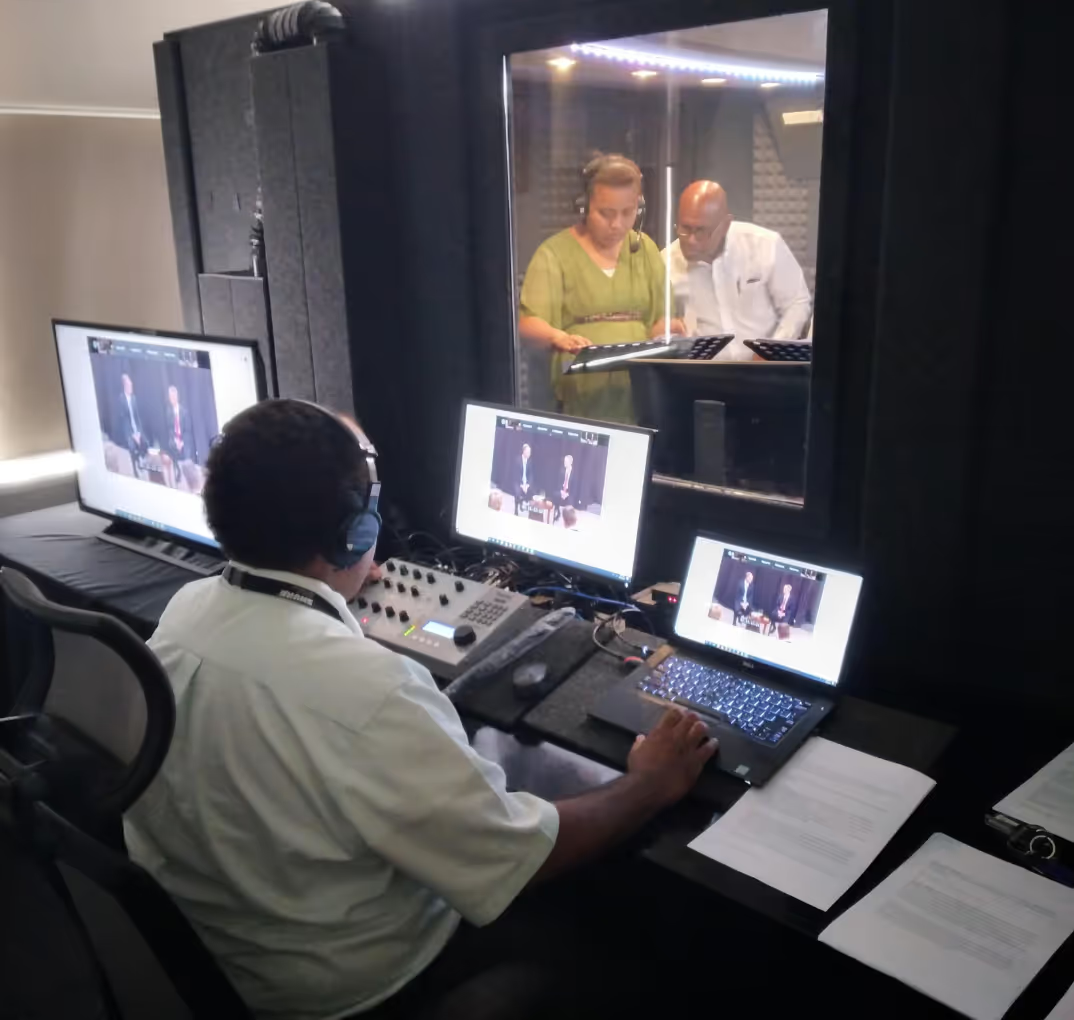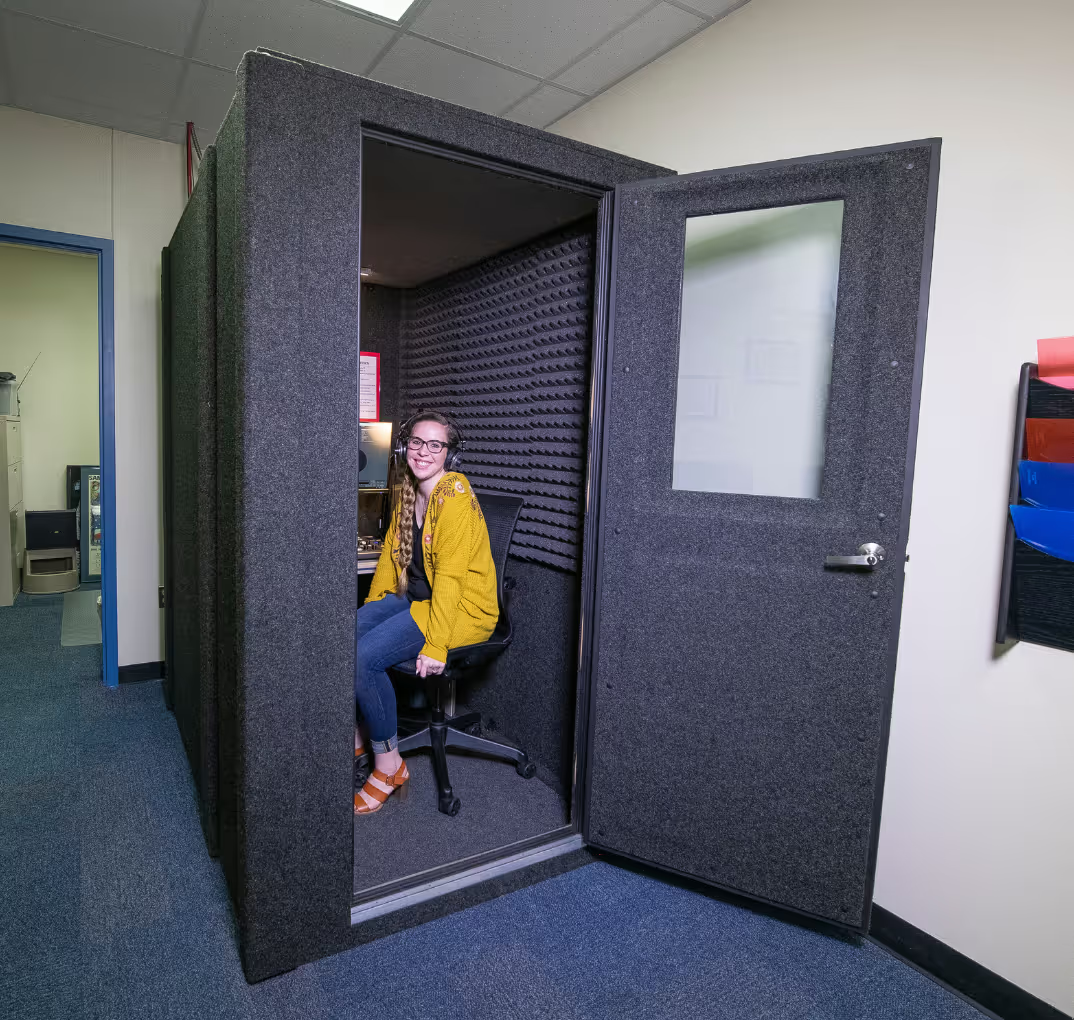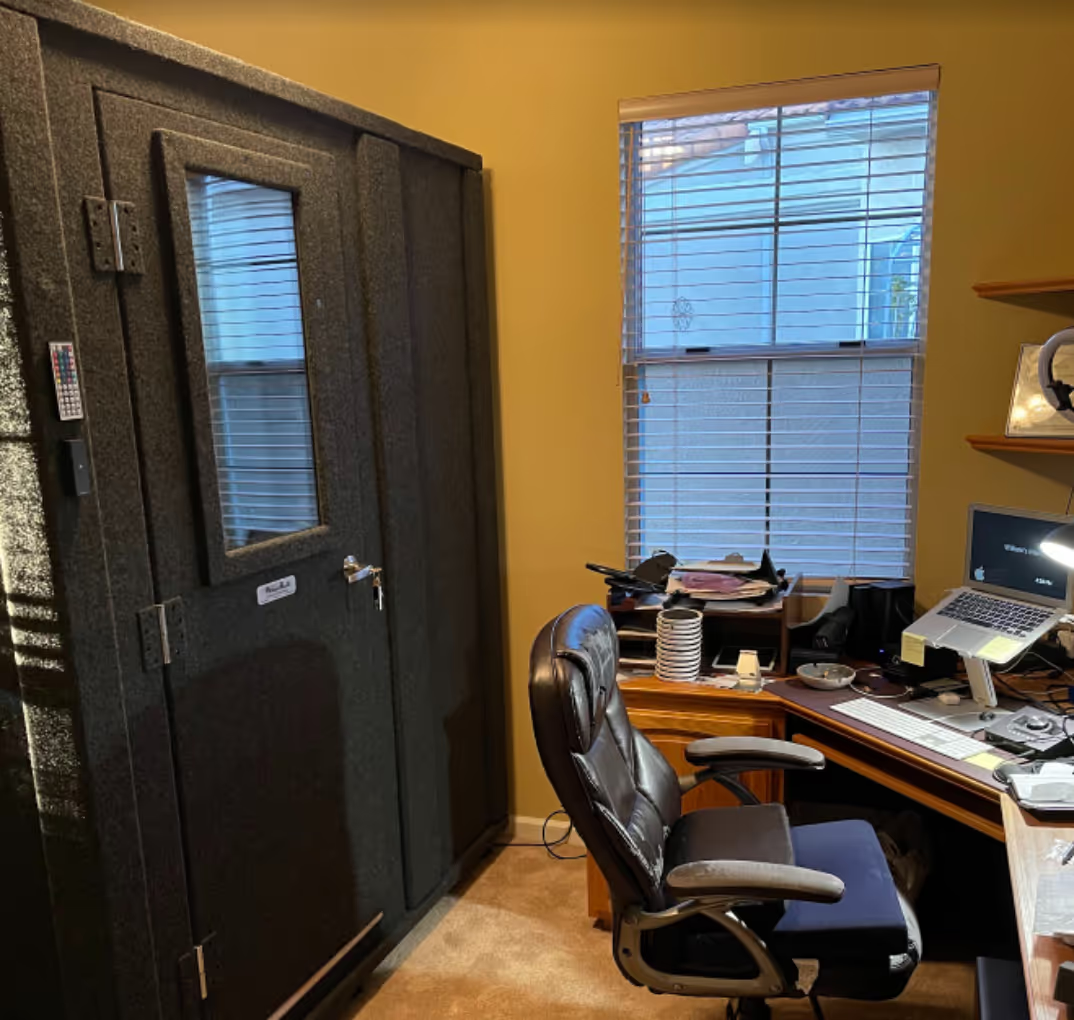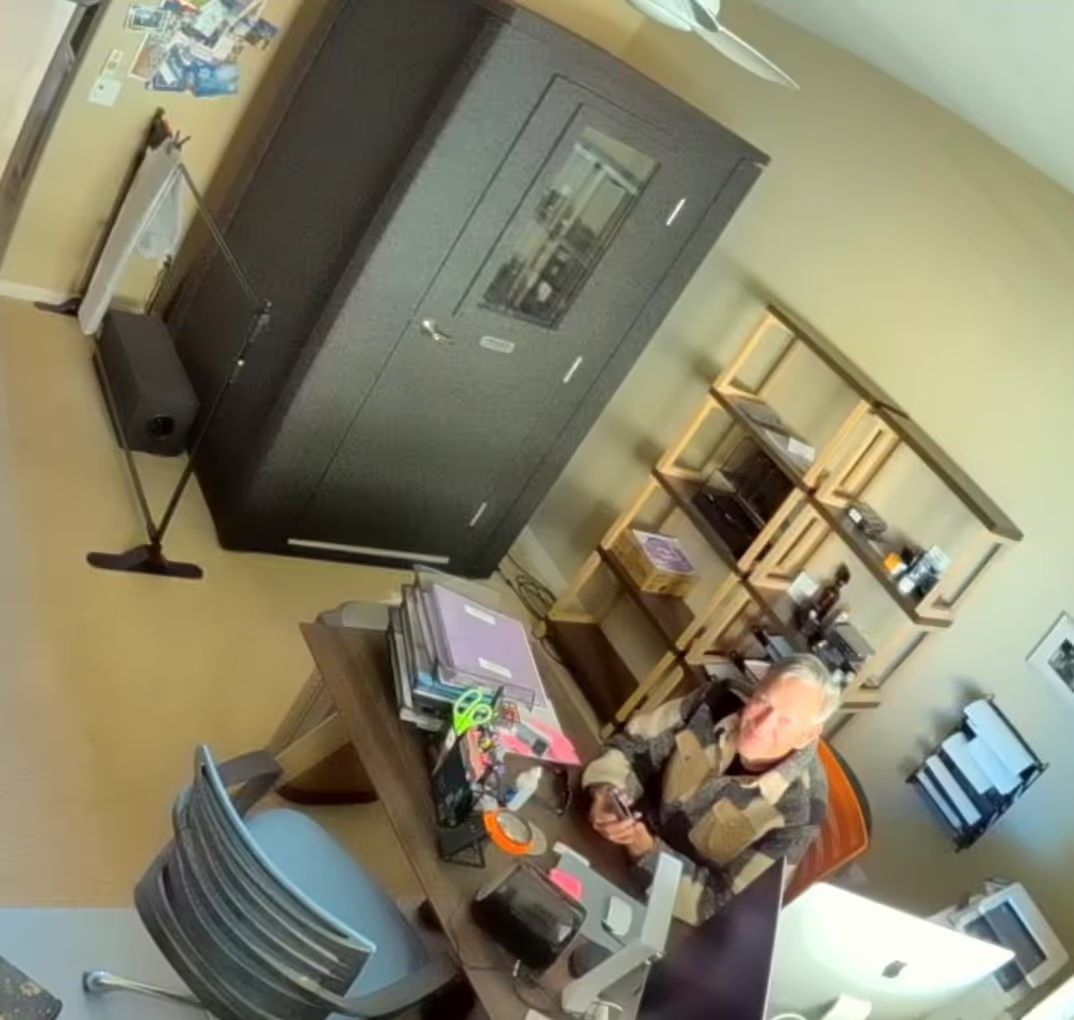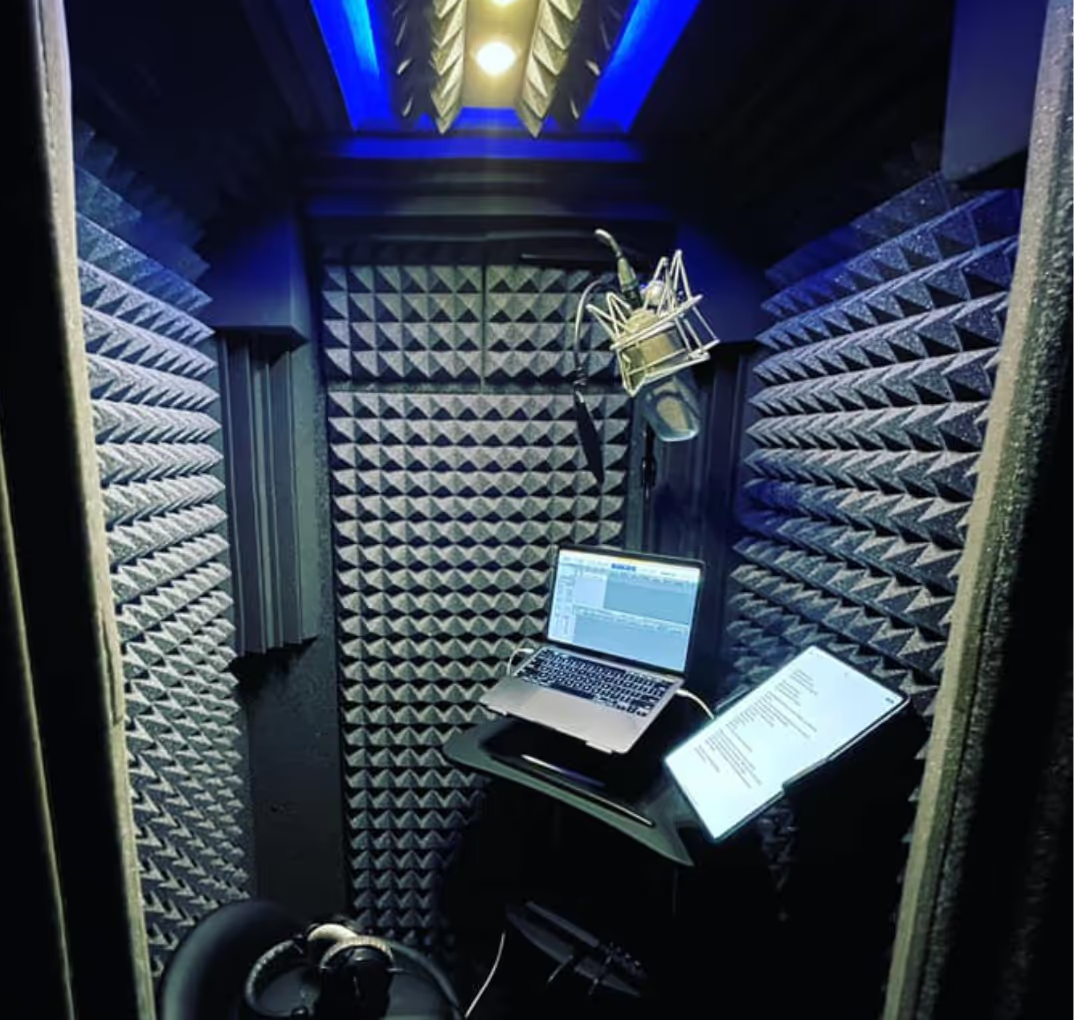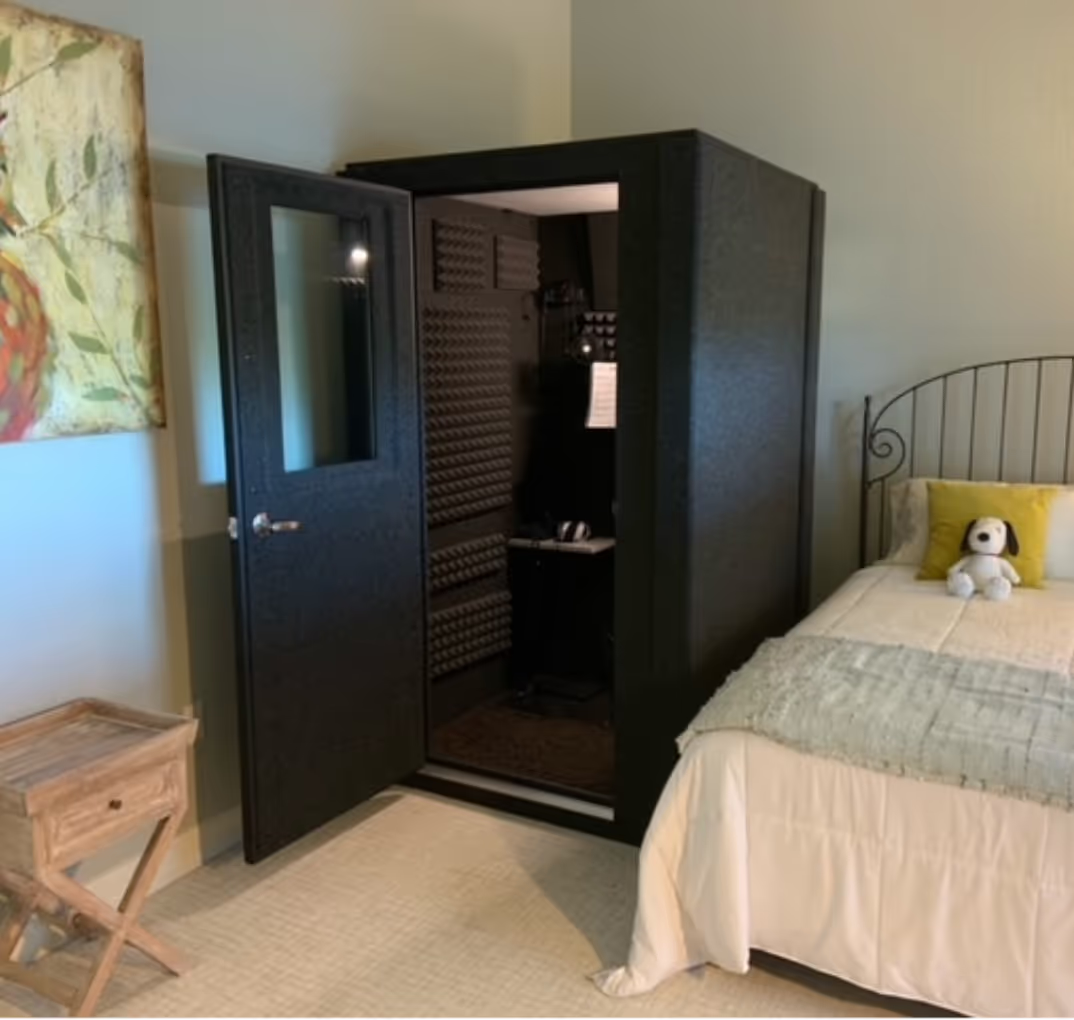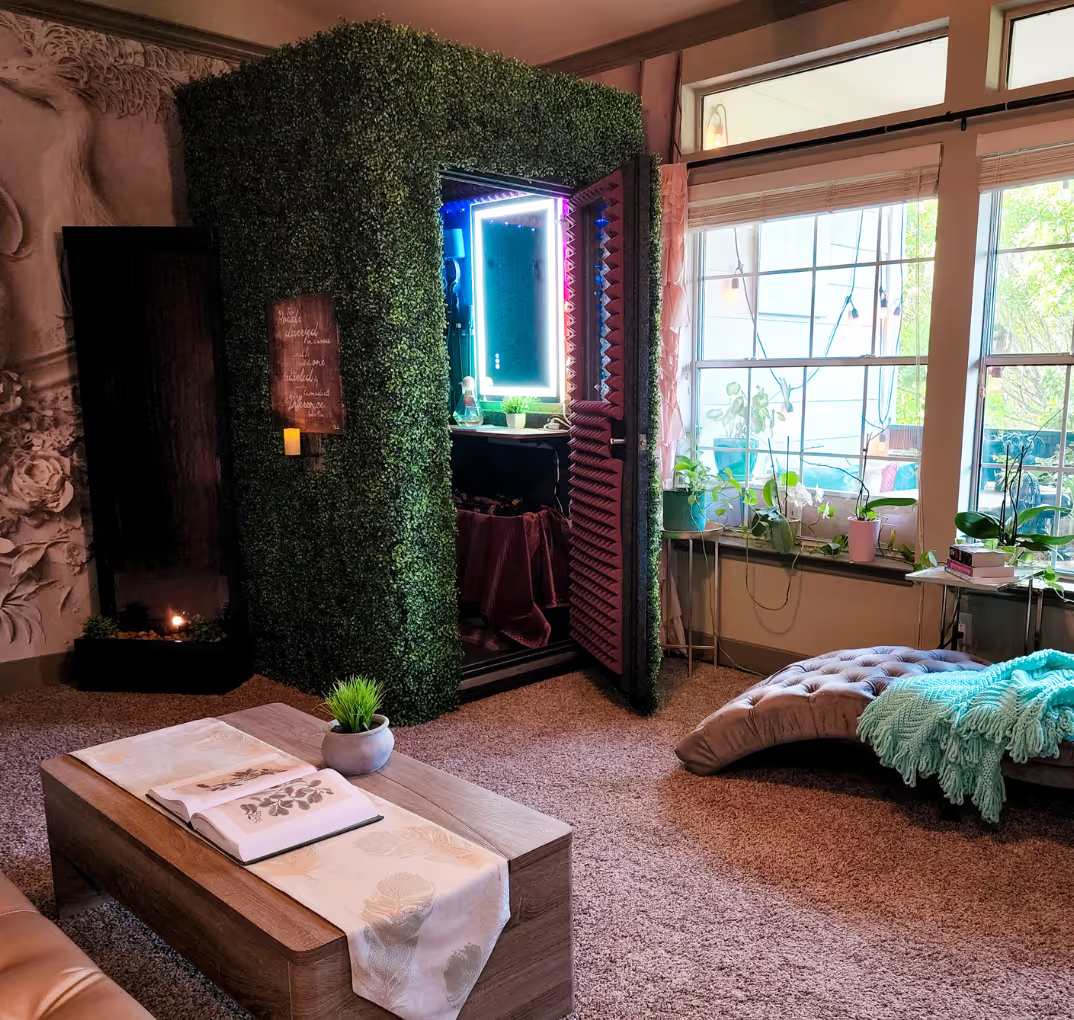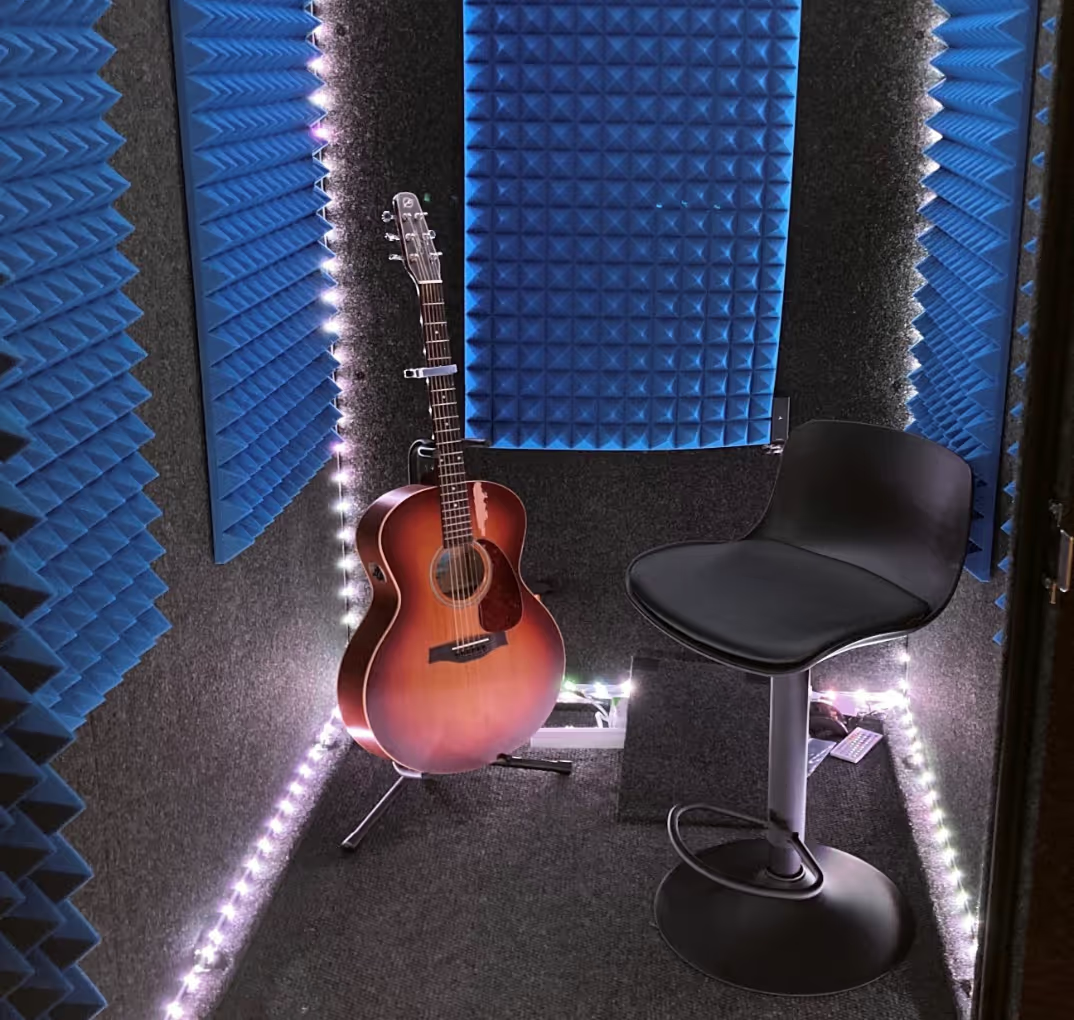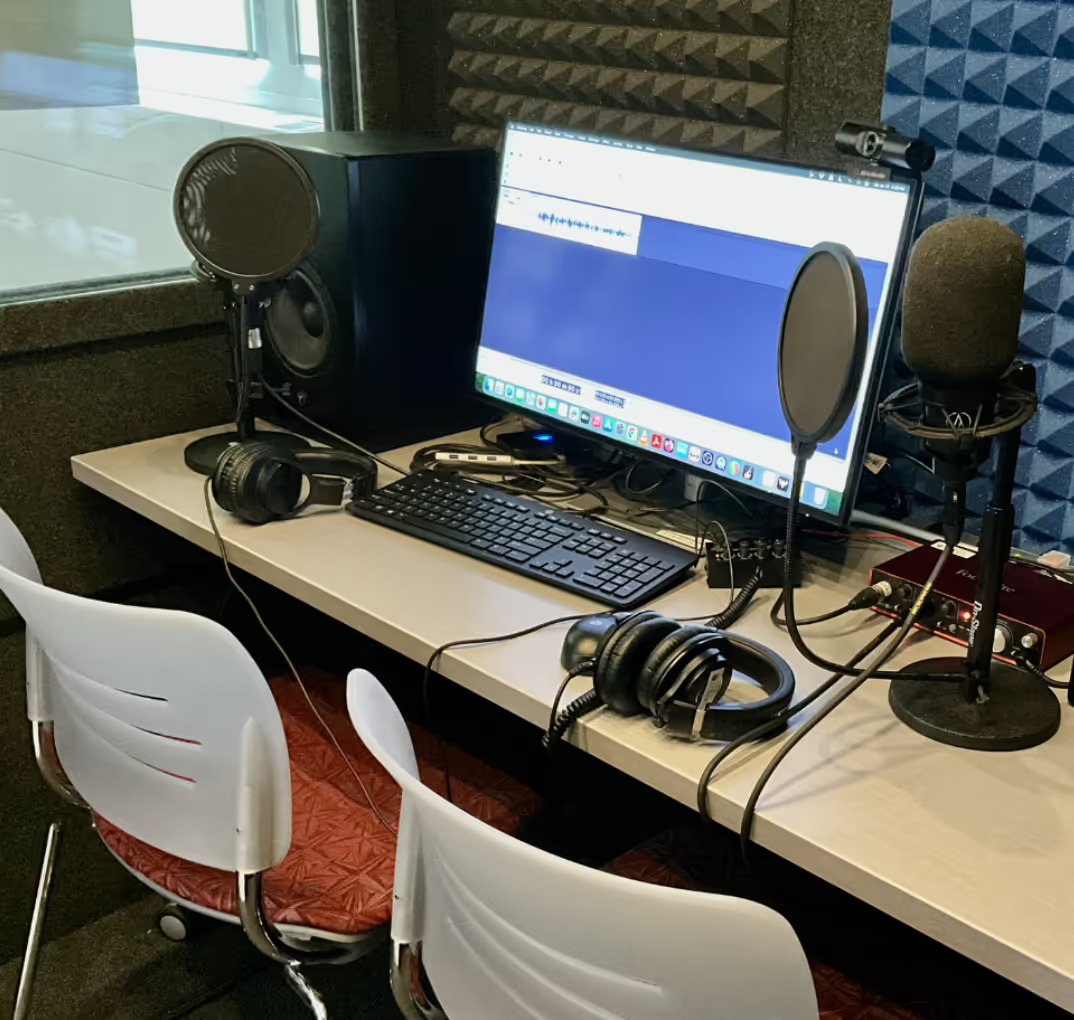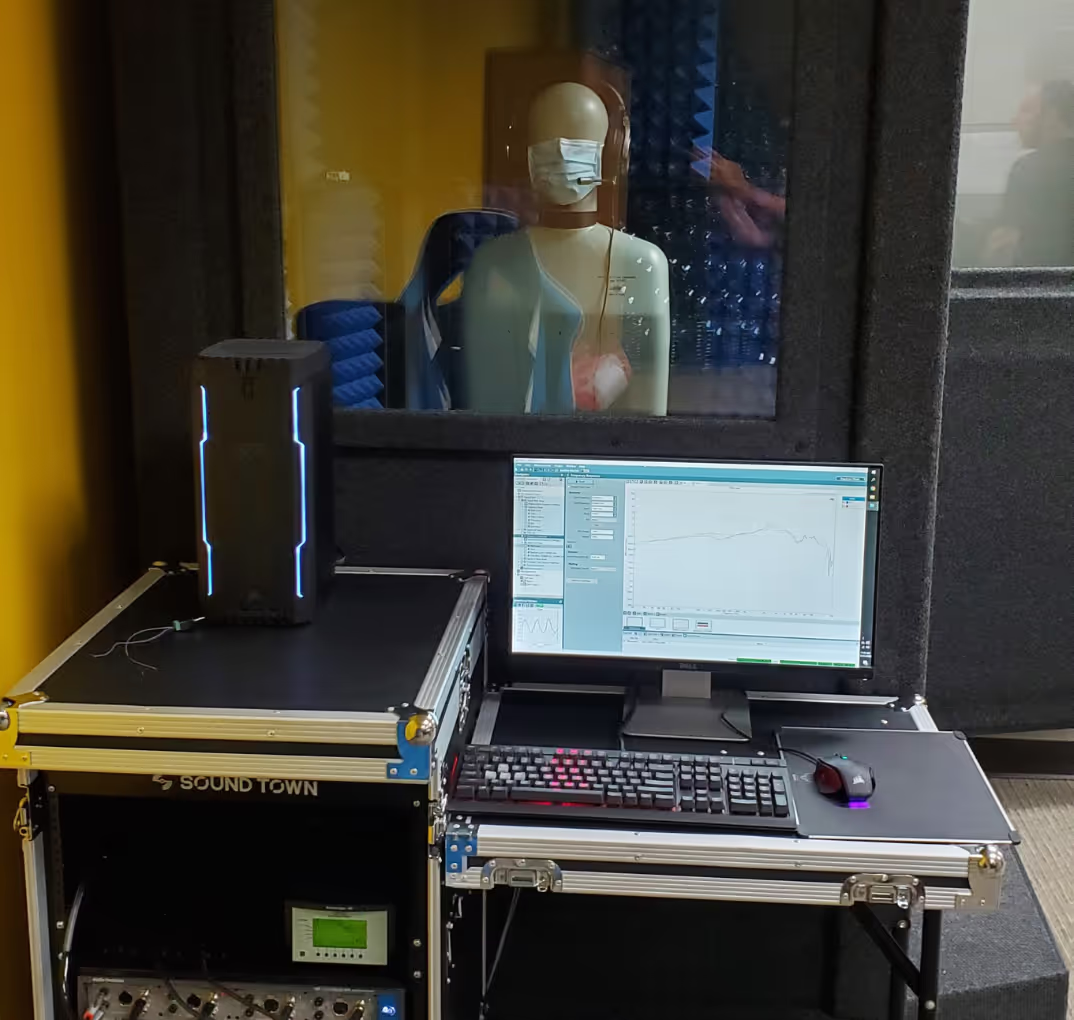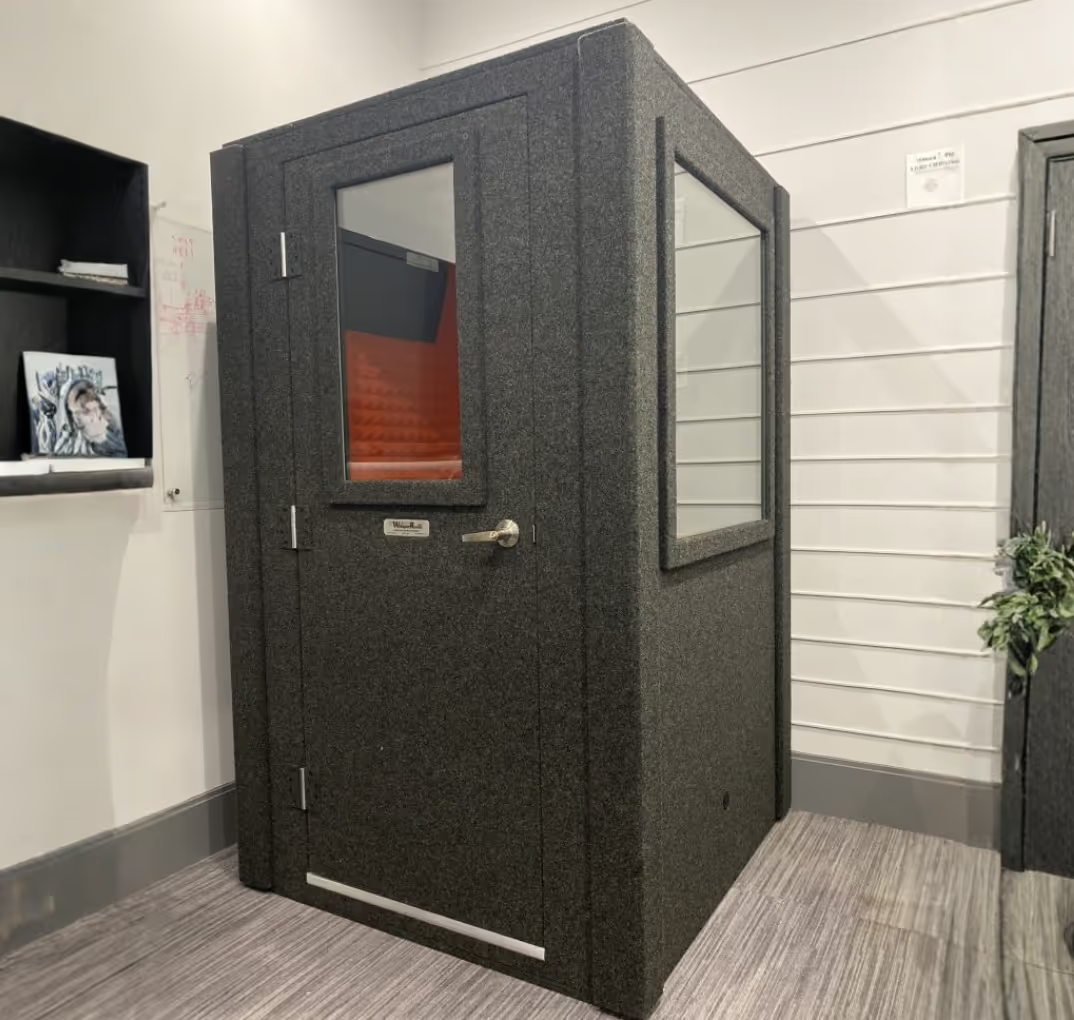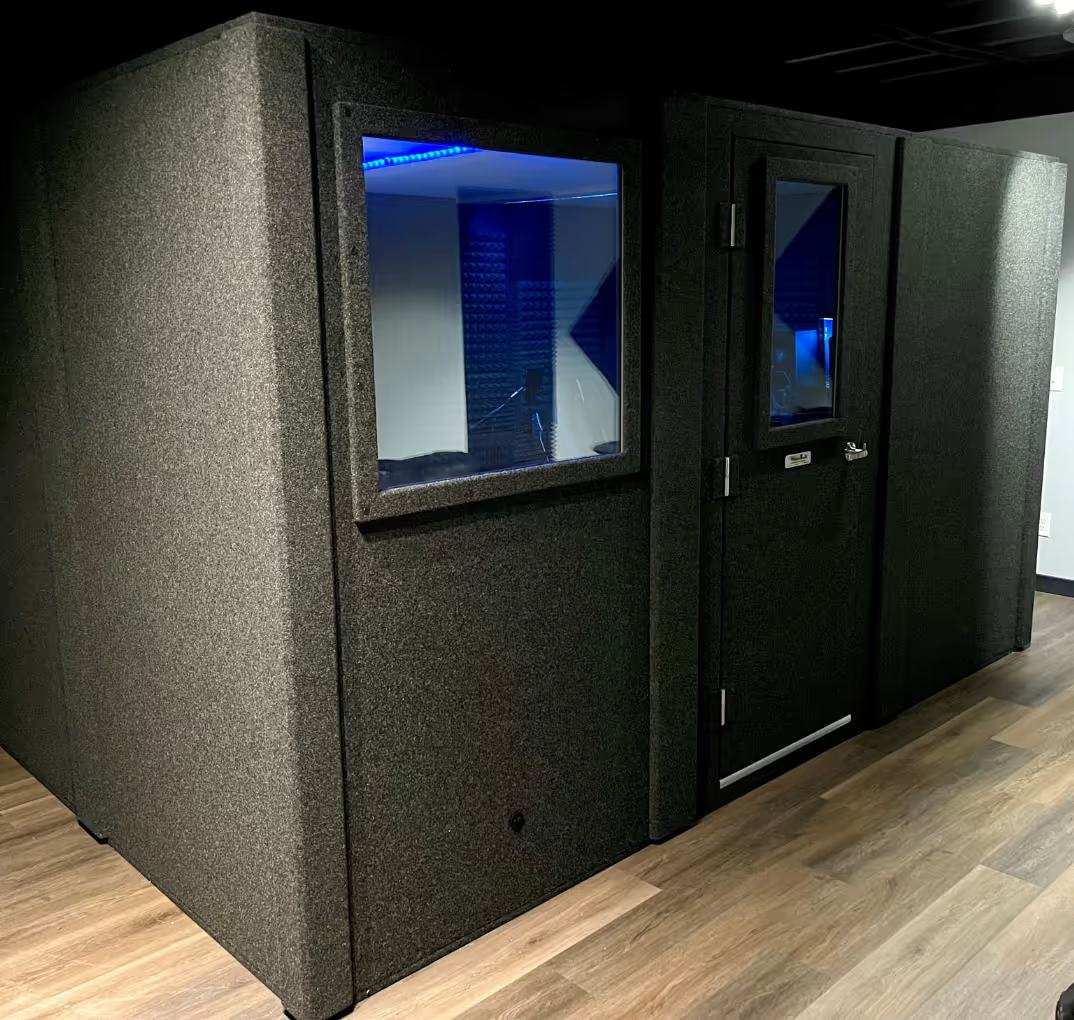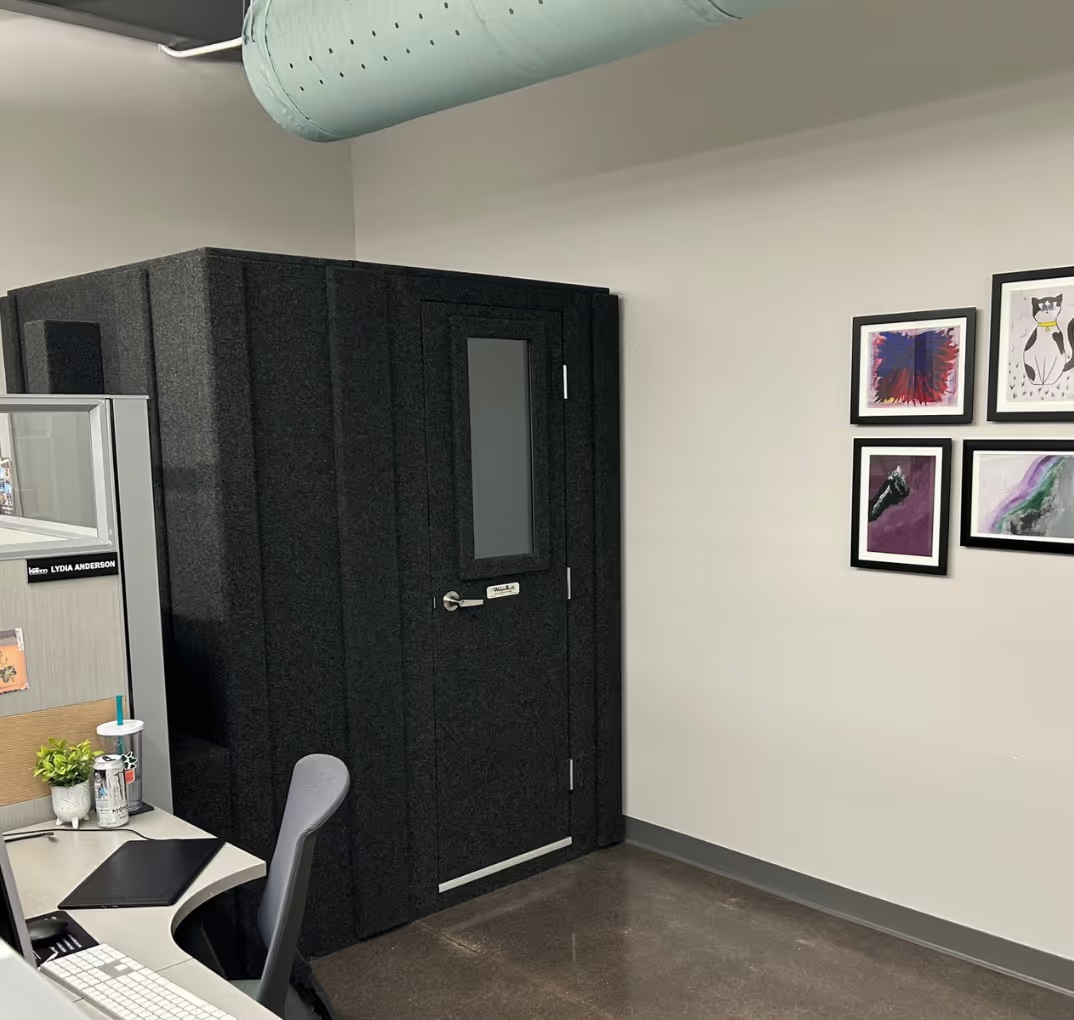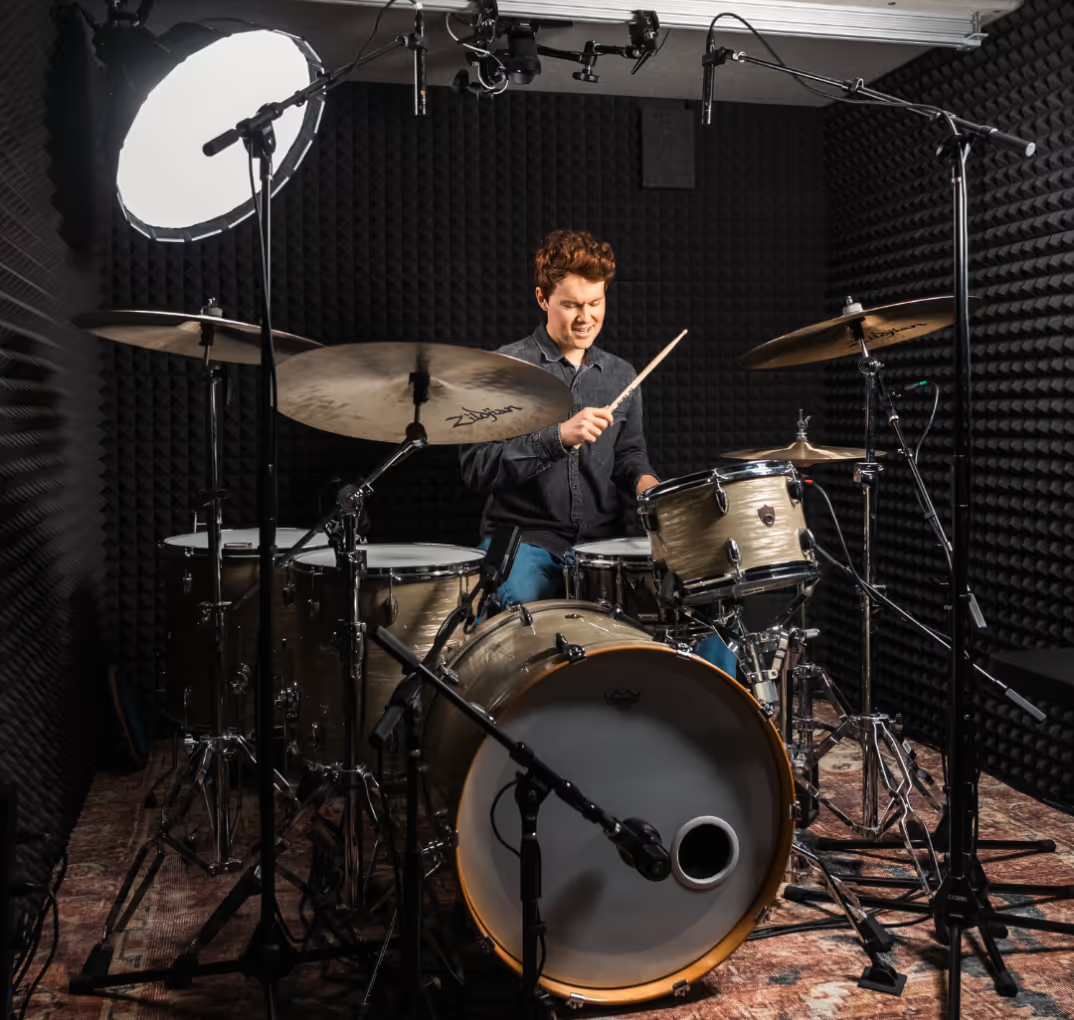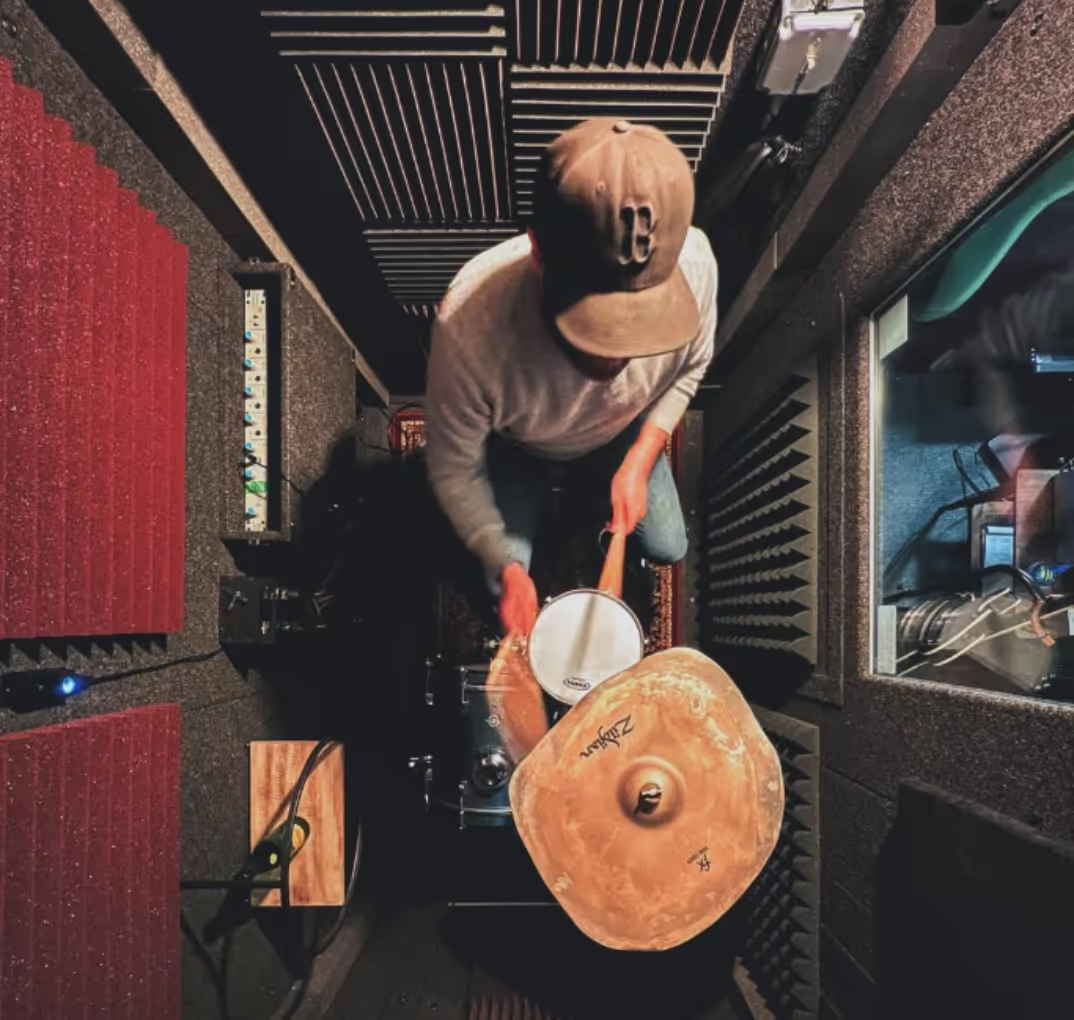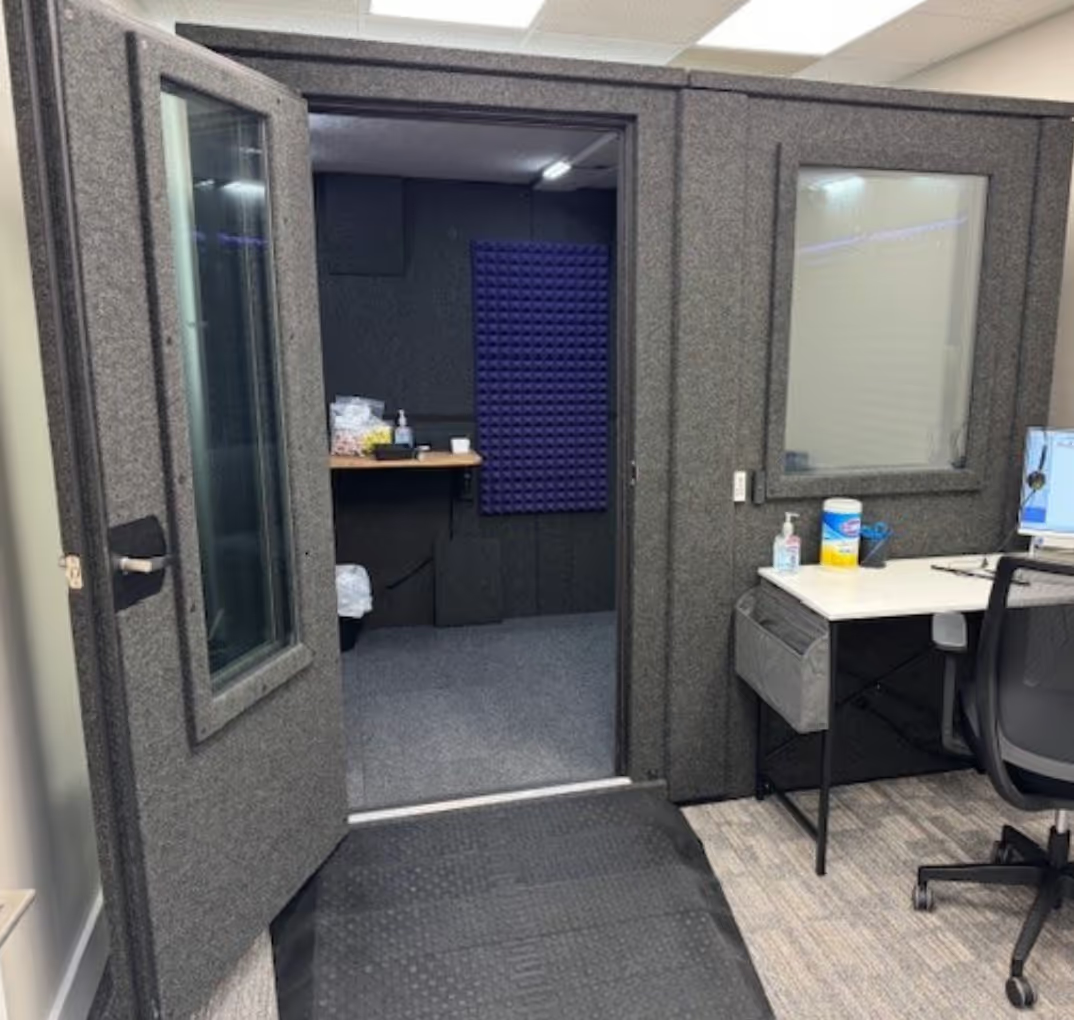Looking to record music from the comfort of your home? Whether you’re tracking vocals, mixing a demo, or building a long-term creative space, this guide covers everything you need to know to plan, construct, and optimize a music studio at home—without blowing your budget.
What Should You Plan Before Building a Home Recording Studio?
The success of your home studio depends heavily on upfront planning. Before you grab a drill or start ordering gear, take time to evaluate your space, goals, and noise concerns.
Here's what to consider first:
- Room choice matters. Avoid large open spaces and rooms with lots of windows or hard surfaces. Smaller rooms with irregular shapes are often easier to control acoustically.
- Identify your studio purpose. Will you record full bands or just vocals? Is this for personal projects, clients, or content creation?
- Outline your gear list early. Think about your mic setup, interface, monitors, and treatment needs. This helps avoid wasted spending down the road.
- Check for noise sources. HVAC systems, street noise, or even loud plumbing can make a space harder to treat.

What Safety Tips Should You Know When Building a Studio?
If you're doing any construction yourself, safety should come first. Basic DIY studio builds can involve heavy lifting, tools, and even some electrical work.
Tips to stay safe:
- Use proper gear. Safety glasses, work gloves, and masks when working with insulation, plywood, or MDF are a must.
- Ventilate properly. Acoustic materials and adhesives can emit fumes—make sure your workspace is well-ventilated.
- Know your limits. If your design includes power outlets, lighting, or major construction, consult a professional electrician or contractor.

How Do You Soundproof a Home Studio for Music?
Soundproofing and acoustic treatment are not the same. Most people confuse the two—but understanding both is essential for getting pro-quality sound.
Here’s how they differ:
- Soundproofing = blocking noise from escaping or entering your studio
- Acoustic treatment = improving how sound behaves inside your space
For soundproofing:
- Use mass-loaded vinyl (MLV) or additional drywall layers
- Install door seals, weatherstripping, and acoustic caulk
- Consider decoupling walls or floors if you're dealing with serious low-end noise
For acoustic treatment:
- Install absorption panels to reduce echo
- Use bass traps in corners to tame low frequencies
- Position diffusers to prevent reflections and dead spots
If construction isn’t an option—or if you're renting—consider a modular solution like a WhisperRoom® sound isolation booth. It offers professional-level acoustic control without permanent changes to your space.
How Can You Reduce Studio Construction Costs Without Sacrificing Quality?
It’s absolutely possible to build a quality home studio on a budget. The key is knowing where to spend and where to save.
Cost-saving strategies:
- Build in phases. Start with basic recording functionality, then upgrade over time.
- Buy used gear where possible. Interfaces, monitors, and even treatment panels can often be found gently used
- DIY your treatment. Basic acoustic panels and diffusers can be made with rock wool, canvas, and wooden frames.
- Invest in isolation early. Quiet environments improve every step of production. Booths like a WhisperRoom can save hours in editing and mixing—making them cost-effective long-term.

What's the Easiest Way to Get Professional Sound at Home?
If you're short on space, budget, or construction know-how, modular sound booths are a game changer. Unlike permanent renovations, sound isolation booths are portable, non-destructive, and come acoustically optimized out of the box.
Why musicians choose WhisperRoom:
- Excellent isolation from household and external noise
- Fast setup without permits or contractors
- Customizable configurations for any space or workflow
- Expandable configurations as your studio grows
They’re ideal for vocal recording, mixing, and even live streaming from home without background distractions.
FAQs
How much does it cost to build a home recording studio?
Basic setups can start around $500–$1,000 for solo recording. Professional setups range from $5,000 to $20,000+, depending on gear, treatment, and build complexity.
Can I build a home studio in an apartment or rental?
Yes. Focus on portable acoustic panels, isolation pads, and freestadning sound proof booths like WhisperRoom units that require no permanent changes to the space.
Do I need to build walls or renovate my room?
Not necessarily. Many musicians get professional results by using pre-built isolation booths or combining treatment with basic soundproofing.
What room is best for a home studio?
Choose a quiet room away from street noise with minimal echo—carpeted rooms with irregular shapes are ideal.
What acoustic treatment do I need for a home studio?
Start with absorption panels to reduce echo and flutter, add bass traps in corners to manage low frequencies, and use diffusers to keep the room from sounding too “dead.”
What's the quietest option for recording vocals at home?
A pre-fabricated sound isolation booth like WhisperRoom provides the best combination of sound isolation and ease of setup, especially for vocal tracking.
Can I use a WhisperRoom instead of building a vocal booth?
Yes. WhisperRoom booths are modular, movable, and customizable—perfect for musicians who want acoustic control without construction.
How long does it take to set up a home studio?
A basic setup can be ready in a weekend. More advanced builds may take a few weeks, especially if you're soundproofing or treating the room.








.avif)
.avif)
.avif)

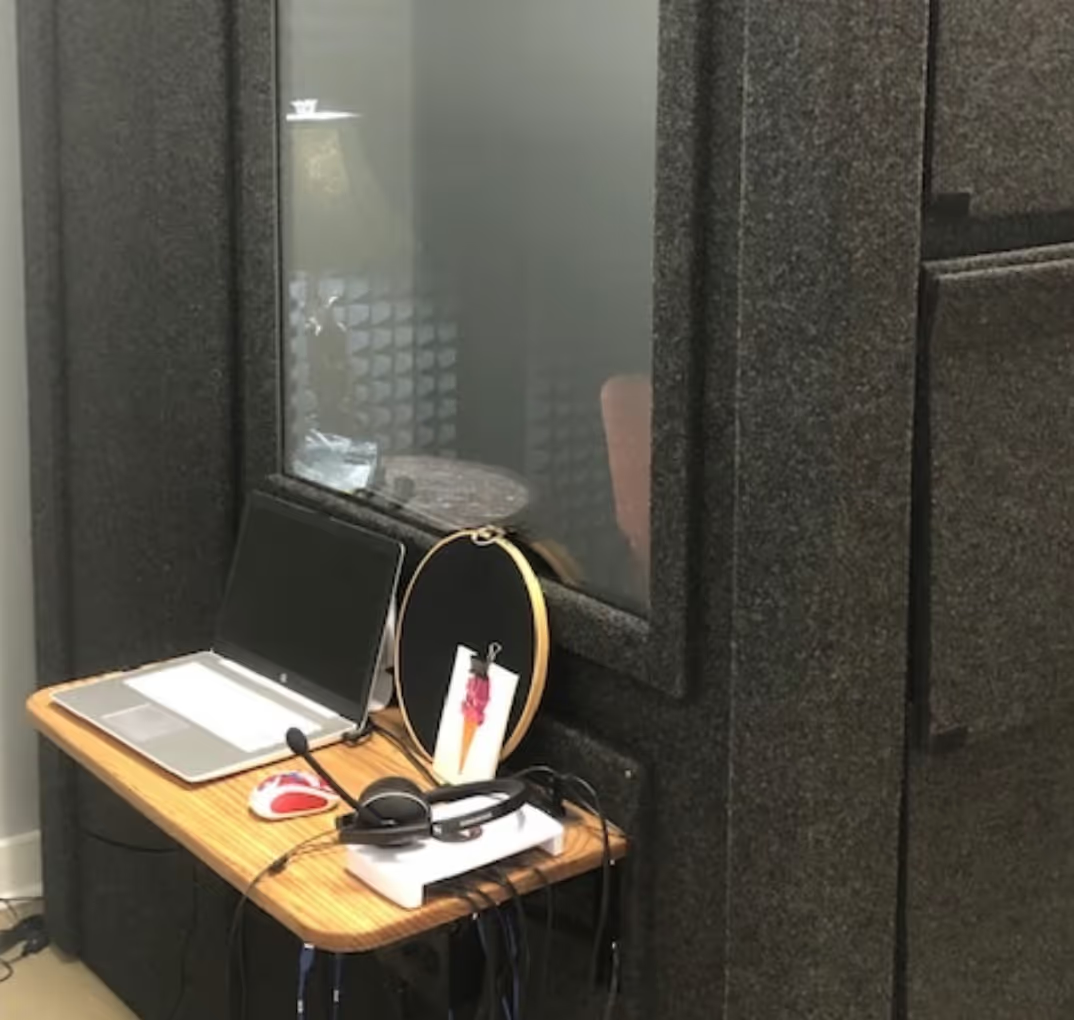
.avif)
.avif)

.avif)
.avif)
.avif)
.avif)
.avif)
.avif)
.avif)
.avif)
.avif)
.avif)
.avif)
.avif)
.avif)
.avif)
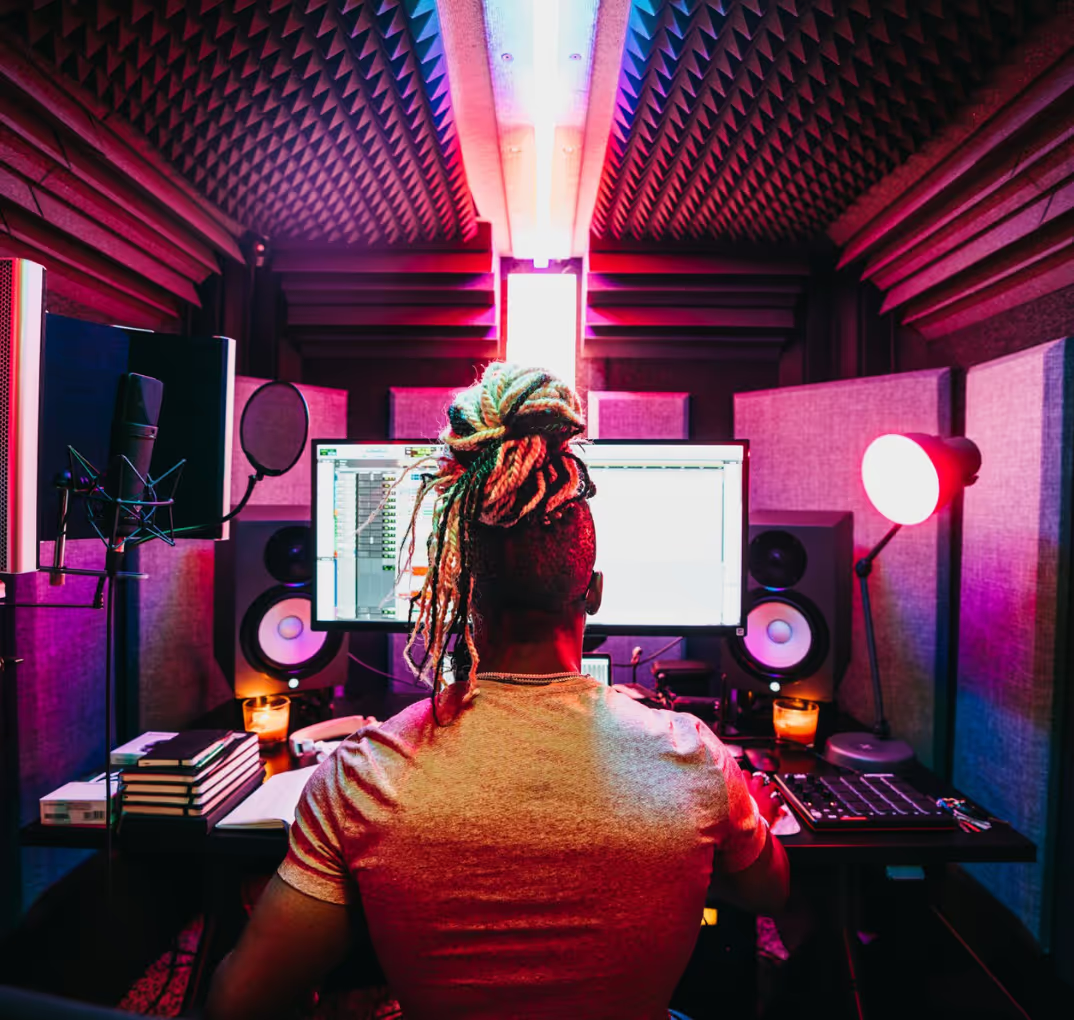
.avif)
.avif)

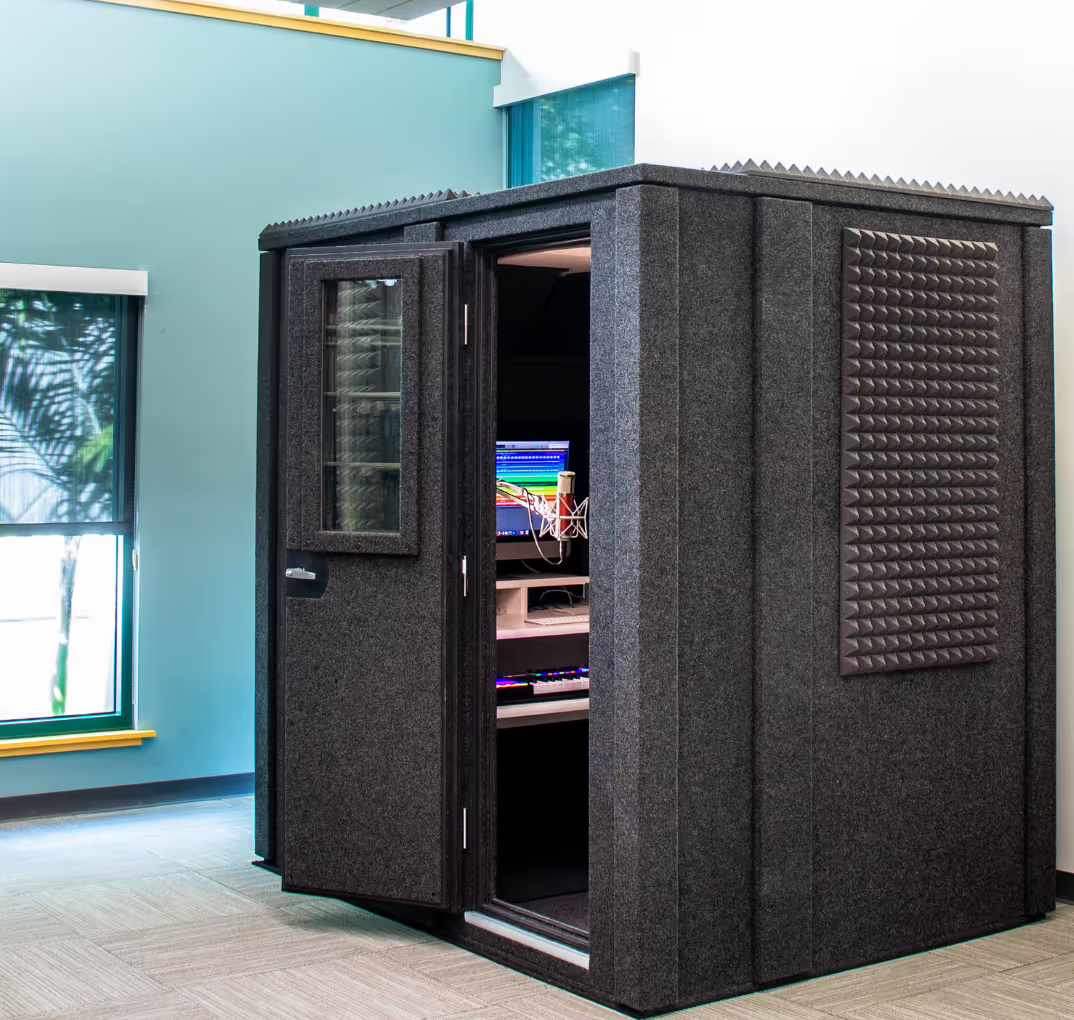
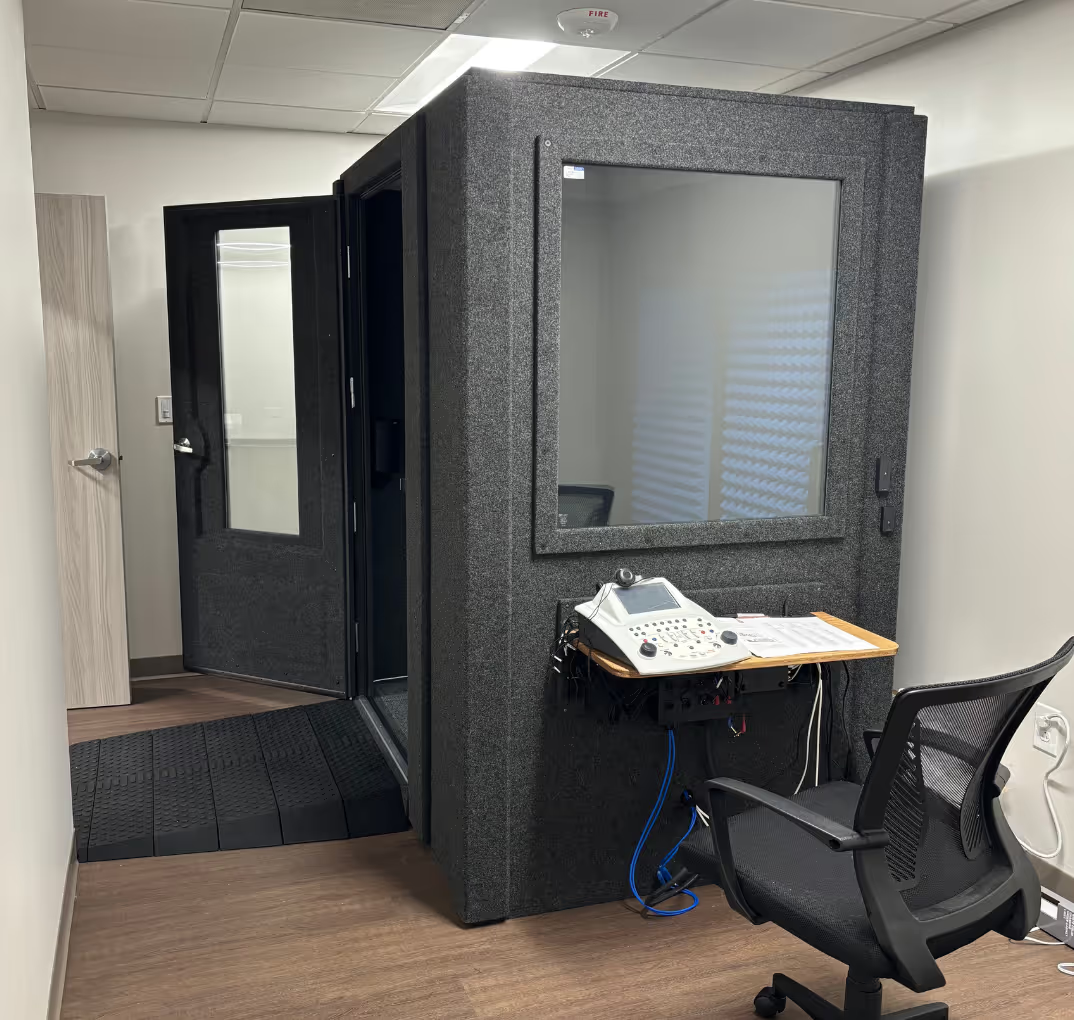
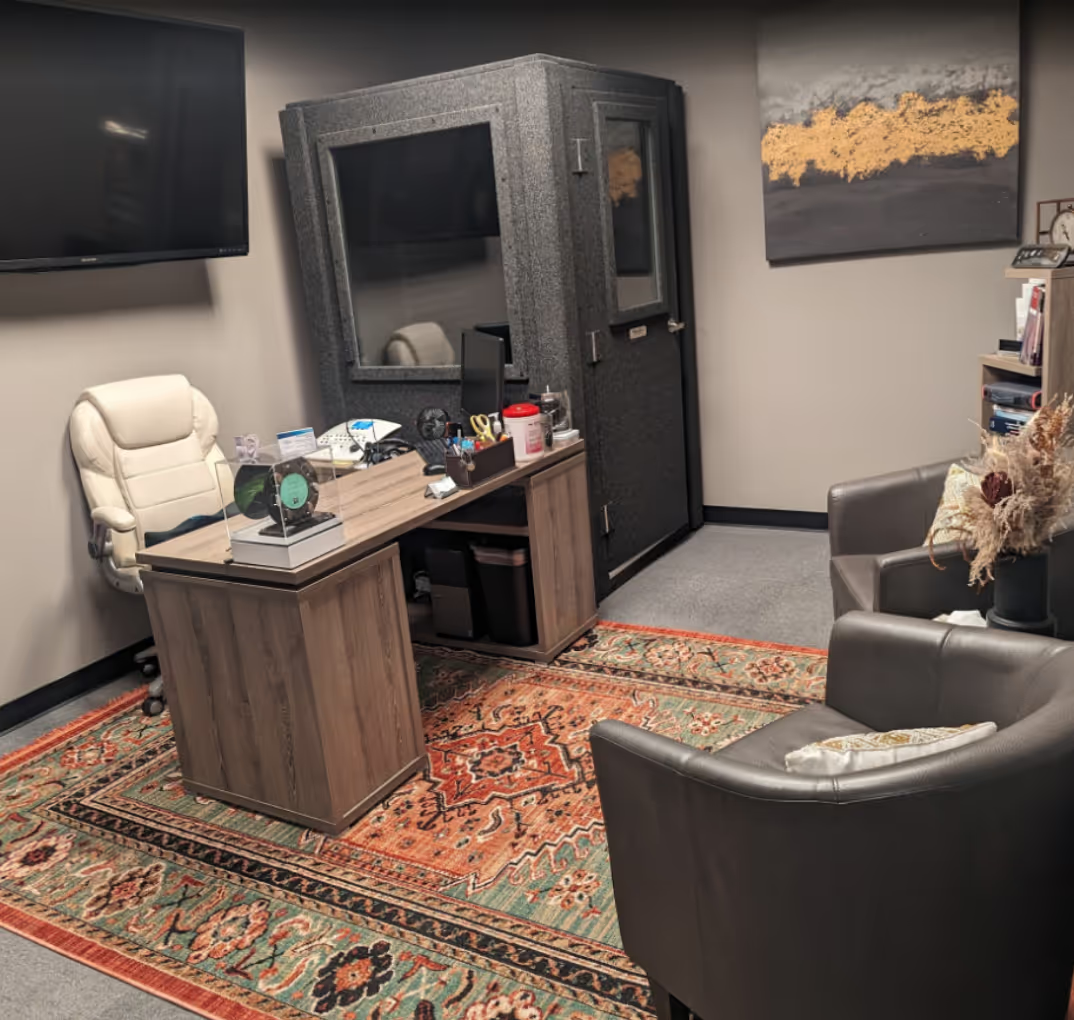

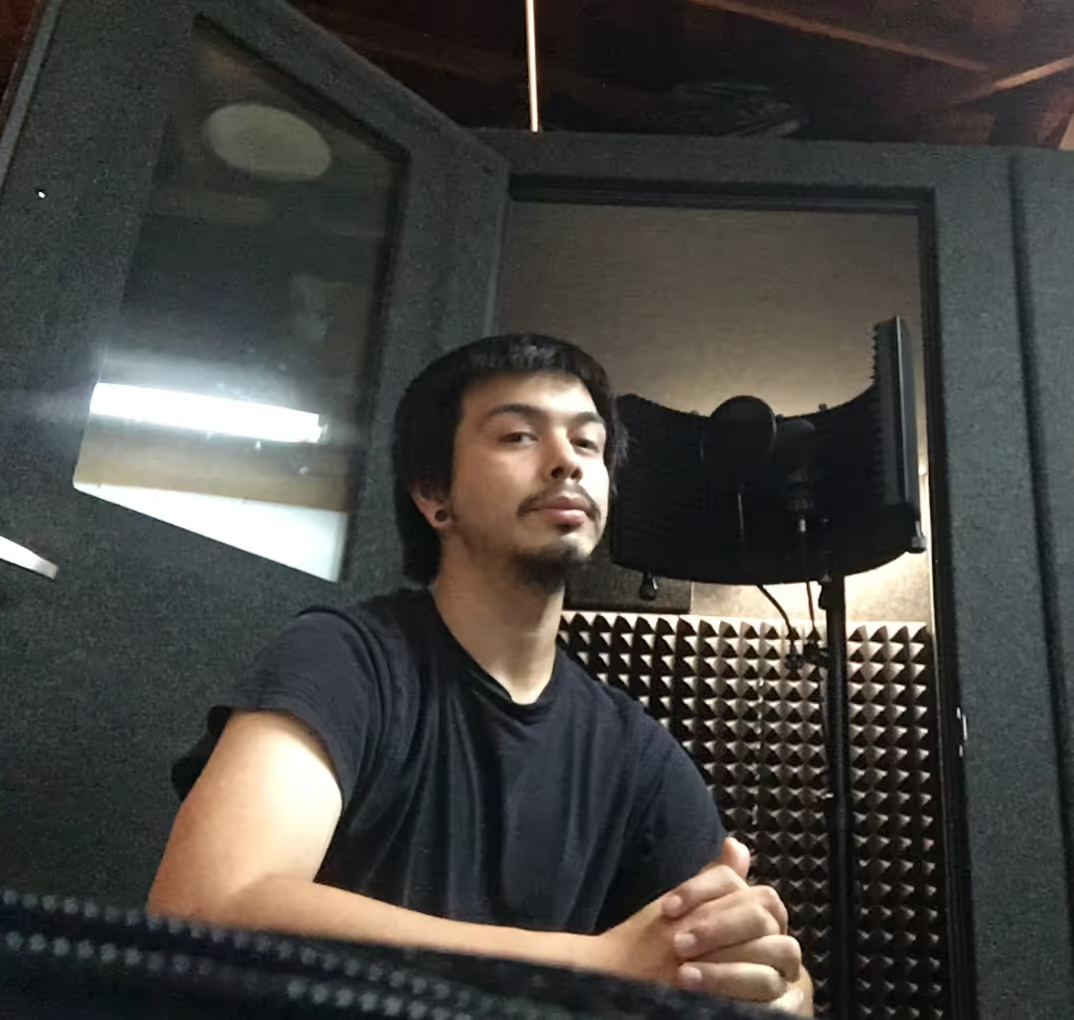
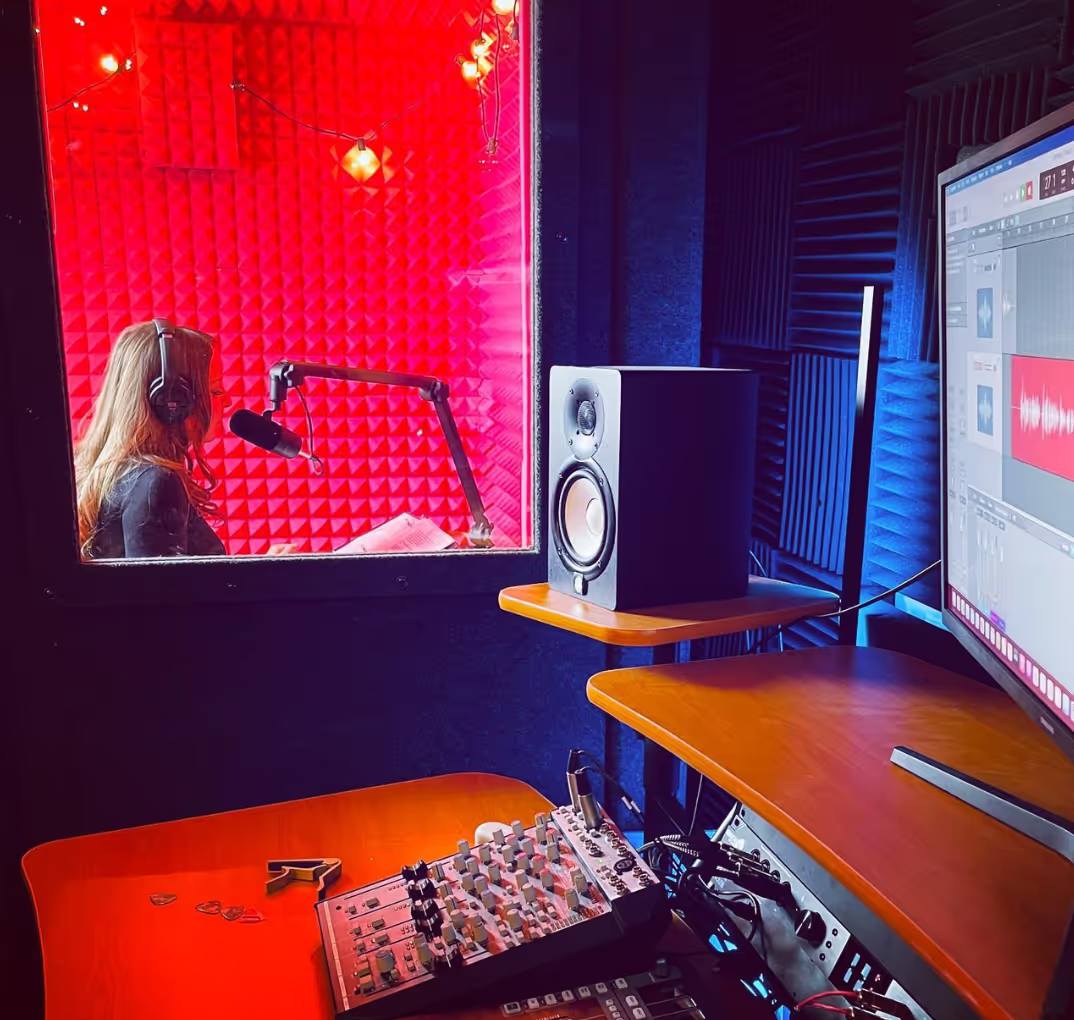
.avif)

